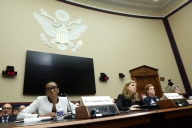You have /5 articles left.
Sign up for a free account or log in.

Before we dig into Matt’s tweet, a quick promo.
Go check out Matt’s book, Creating Online Learning Experiences: A Brief Guide to Online Courses, from Small and Private to Massive and Open. This is a must-read book for anyone thinking about teaching or designing an online course or program. The book is clear, concise, research-grounded, and even fun to read. Moreover, and quite amazingly, Matt and his colleagues have released the book under a Creative Commons Attribution NonCommercial license, so the book is free for you to download and read.
Okay, back to Matt’s tweet. Matt was reacting to the Twitter discussion that I tried to capture in An OPM Debate: 11 Colleagues in 32 Tweets.
What do you think?
My first reaction was, “that’s right.” To say that the instructional design community has not been well represented in our online program management (OPM) conversation is an understatement.
The thing is, neither have faculty. Or students. Or any other stakeholder that might approach the OPM conversation from any perspective beyond the financial.
What worries me most about the spread of the OPM model is the outsourcing of core institutional capacities in instructional design. Online learning programs should be a method to build new capabilities for colleges and universities in learning design and educational media.
Done well, online education should be an incredibly effective faculty development and institutional capacity building engine. This requires that there be a close connection between online and residential programs.
The faculty/instructional designer collaborative partnerships that are built in designing an online course should travel over to residential courses. The backward course design methods that instructional designers use to work with professors to build online courses apply equally as well to face-to-face courses.
Good online courses built around course goals and modular level learning objectives, with the content and assessments supporting these learning goals and objectives. The same methodology should apply to residential courses.
A terrible result of a university partnering with an OPM would be if that link between online and residential teaching and learning were to be severed.
We should be asking how OPM arrangements enable schools to higher more instructional designers, not less. Any OPM strategy should be integrated into efforts to bring more instructional designers to campus, and to make sure that instructional designers are given the respect and autonomy that all educators deserve.
What might a pro-OPM and pro instructional designer argument look like?
First, it is clear that the campus instructional design community should be involved in any discussion around a possible contract with an OPM. It may be that the campus instructional design teams are in a place to provide the services necessary to build a new online program - and that they just need to be asked.
If it is the case that an OPM partnership makes sense because a school is unable to provide the capital and people necessary to support a new online program, then it should be clear how this OPM deal aligns with the goals of the instructional design team.
Will the new OPM enabled online program bring in revenues that will enable other learning innovations that the instructional design team can initiate?
Will the OPM enabled online program generate content and materials that can be utilized in residential classes, bringing in campus instructional designers as partners?
What role can the instructional design team, even one that is stretched for resources and is dealing with high levels of demand for their services, participate in new online programs that are done by OPMs?
Anyone working on OPM partnerships, including the OPM industry, should be asking these questions.
The fastest way to kill an OPM partnership would be to ignore the long-term interests of the educators on-campus - faculty and non-faculty educators - in favor of a purely financial and transactional approach to online learning.
I’m happy that Matt jumped into the discussion. He is exactly right.
The question for me is how might we have a different sort of OPM conversation? Where can we have a discussion about OPMs that is inclusive, collegial, informed by data? (Especially outcome data for students and institutions).
What do you see as the potential risks and benefits of the OPM wave for campus instructional designers?








